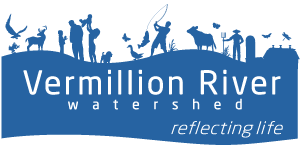Fish surveys of East Lake show a significant common carp population. Carp are bottom feeders. When they feed on the bottom of the lake, carp can stir up the bottom sediments, releasing phosphorus into the water.
Phosphorus is a basic element for plant growth, but too much of it in water can impact water quality – excess algae growth and a decrease in oxygen for the aquatic insects and fish that depend on it. Addressing the internal source of phosphorus is an important factor to solving the water quality problem. East Lake is impaired due to excess nutrients.
In 2018, a $10,285 Dakota County Aquatic Invasive Species grant plus $10,285 of funding from the VRWJPO and City of Lakeville allowed the VRWJPO and City to work with a consultant to estimate carp populations, determine spawning sites, movement, carp age, and locations of possible carp nurseries.
The consultant estimated a population of more than 1,700 carp in East Lake, however, a partial winterkill in the winter of 2018 significantly reduced the number of carp found. Twenty adult carp were radiotagged and tracked during the growing season. The overall water quality is affected by the amount of carp present. Data suggests that:
- carp are reproducing and using East Lake as a nursery for their young, and
- carp do not appear to be inhabiting surrounding stormwater ponds or using them for reproduction or nurseries.
The VRWJPO is interested in carp movement because East Lake drains to North Creek, a tributary to the Vermillion River. Unfortunately, data was inconclusive regarding movement to and from North Creek.
Goldfish were discovered
A surprise to all involved was the discovery of a large population of goldfish. The goldfish were likely human-introduced to East Lake and are reproducing. Goldfish are not native to Minnesota but seem to be very tolerant to the lake conditions. Similar to carp, goldfish can feed in the lake bottom and can have a detrimental effect on water quality by releasing phosphorus into the lake when they search for food. The VRWJPO and City of Lakeville, in conjunction with the Minnesota Department of Natural Resources, have been discussing possible management solutions for the goldfish, which differ from that of carp.
In 2019, VRWJPO staff will continue work with the City of Lakeville to address the carp and goldfish populations and internal phosphorus problem. Possible management suggestions include understanding population rebound potential, monitoring dissolved oxygen, determining carp nursery selection, conclusively tracking movement between East Lake and North Creek, removing carp, adding a fish barrier, or evaluating the benefits of fish stocking.
Photos of carp tracking and goldfish can be found here.


